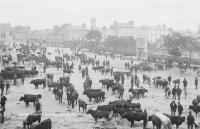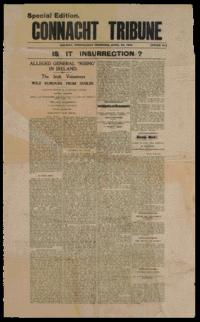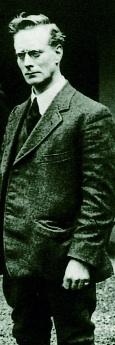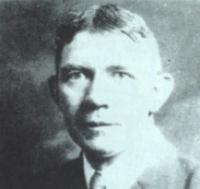‘The most shoneen town in Ireland’:Galway in 1916
Published in 20th-century / Contemporary History, Features, Issue 1 (Jan/Feb 2011), Revolutionary Period 1912-23, Volume 19
Eyre Square, Galway, c. 1916. Like most of the towns in east Galway, the ‘City of the Tribes’ was resolutely pro-Redmond and anti-Sinn Féin. (NLI)
During the Irish revolution, the creation of the physical-force tradition necessitated the humiliation of constitutional nationalists by their social inferiors in Sinn Féin and the Volunteers. The resentment generated by the destruction of the parliamentary tradition led to violent feuding between republicans and nationalists in County Galway between 1914 and 1918. While the much less numerous Irish Volunteers remained committed to the separatist cause and flourished in rural parts of Galway such as Athenry, Clarinbridge and Kinvara, nationalists in the towns of the east of the county remained resolutely pro-Redmond, and antipathy towards Sinn Féin, particularly amongst the urban poor, remained profound. IRA Volunteer Martin O’Regan recalled that ‘Loughrea was one hundred per cent anti-national at this time’, and Volunteer Thomas Courtney remembered, ‘Thinking back over the years, I have come to the conclusion that Galway town was, and in my opinion still is, the most shoneen town in Ireland’.
Violence between republicans and nationalists forced the county inspector of police to report that ‘at Turloughmore and Cummer, the peace is only protected with incessant police vigilance, and no less than two head constables and 50 extra police have been drafted into an area of a very few square miles’. In Galway town, the Irish Volunteerswere practically wiped out in one night in October 1914 following widespread rioting, with republicans and their supporters literally beaten along the streets by an angry crowd of nationalists. The event was described by the Connacht Tribune as ‘guerrilla warfare on a small scale’ and climaxed in attacks on the homes and businesses of known republicans. Sinn Féin’s constant disruption of recruitment meetings in the town provoked Thomas Kenny, editor of the Connacht Tribune, to remark: ‘Sinn Féin has hitherto been treated with generous tolerance in the city . . . that tolerance has reached its limit. The puny plotters have only themselves to blame.’ The Galway Express noted: ‘Sinn Féin cannot be tolerated; they must be absolutely put down if traitors are in the country, and they can only expect the fate of same’.
 Rebels seen as hostile invading force
Rebels seen as hostile invading force
As word spread that the Volunteers were massing in the east Galway countryside, the rebels were perceived by townspeople as a hostile invading force. Ordinary people, cut off by rail and road from the rest of the country and with telegraph lines cut down, were quickly gripped by rumour and hysteria. All premises in the town closed their doors and all work came to an immediate stop. Amid fears of a repetition of events in the capital, the post office was placed under armed guard by the military and notices of martial law were posted, stating that ‘all licensed premises in the urban district of Galway were to remain closed forthwith and all persons were to remain indoors between the hours of 5pm and 8am’. Members of the National Volunteers were explicitly exempt from the emergency regulations and the military curfew was greatly resented. The local paper noted: ‘Men were no longer able to concentrate their minds on their business . . . Preparations were made for meeting and repelling the invasion and anxious people found themselves drifting towards the Square and looking in the direction of Oranmore’. On Tuesday afternoon a public meeting was called by the urban district council and attended by over 100 people in the town hall. A ‘committee for public safety’ was formed to support the Crown forces and coordinate a concerted civilian response. The committee was chaired by local businessman Mairtín Mór McDonogh, and citizens were urged to offer themselves for enrolment as special constables, or ‘in any way the authorities may consider, they may be useful in the present crisis’. The ‘specials’, as they were known, acted as a reserve force for the police all week and were armed and under military command. The committee chairman deplored the fact that ‘they had been plunged into civil war . . . A whole lot of men had, according to rumour, tried to hold up the public offices, the post office and places like that in Dublin. What on earth effect could that have in ten or twenty years as regards the government of this country?’
‘OUR CITIZEN ARMY’
Throughout the week, meetings of the ‘committee for public safety’ were held on a daily basis and the National Volunteers under Captain J.P. McNeill donned their uniforms, patrolling the town in military formation with rifles and bayonets provided by the military. As the week progressed, police reinforcements who had evacuated the surrounding countryside poured into the town, and their numbers were later swollen by the arrival of cars carrying 150 RIC men from Belfast. The Galway Express, in an article entitled ‘OUR CITIZEN ARMY’, reported that:
‘One of the brightest spots in the present lamentable affair is the manner in which Galway civilians have risen to the occasion. A fine citizen army of special constables, dispatch riders, assistants in first aid, etc., have cheerfully given their service to the local authorities in their hour of need.’
Volunteer Thomas Courtney remembered ‘specials’ following him about ‘wherever he went . . . all roads were guarded, they would not let a boy of four out of the town, everybody was on the streets talking about a rebel army that was to march on the town’. The RIC, aided by the ‘specials’, arrested all known Irish Volunteers in the town, loading them into open-top vehicles and parading them for the entertainment of the townsfolk. Volunteer Frank Hardiman remembered being set upon and beaten by ‘rowdies’ at a number of places as the prisoners were pelted with mud by the town’s inhabitants.
A company of Royal Munster Fusiliers was given an official welcome at the quay by members of the ‘committee for public safety’ amid the cheers of grateful townsfolk. The ‘committee’ now called for ‘the authorities and the people of Galway to crush by every means possible, the efforts of the disaffected fanatics and mischief makers’:
‘A new type of blockade has been established in Galway. Country people coming from the direction of the recent Volunteer activities have been forbidden to bring any provisions or household supplies home, lest any of these commodities would find their way to the enemy’s camp.’
Support for the Crown forces by ordinary nationalists during Easter Week was not limited to the town of Galway, and at Craughwell, Turloughmore and Loughrea the National Volunteers came out in force to aid the local RIC. Forty local men manned the Craughwell RIC barracks throughout the week; the Tuam Herald commended ‘the Craughwell men’s loyalty to Ireland’, and claimed that the locals ‘knew well little mercy would be shown some of them, if those lunatics got into the village’. The paper concluded that the rebels had been frightened away by the loyal Craughwell men, as ‘cowardice would not allow those German hirelings enter where they knew a warm reception awaited them’.
Mellows’s leadership undermined
Meanwhile, a battle for the hearts and minds of the rebels camped in south Galway was under way between the outsider Liam Mellows and local Fenian leader Tom Kenny. With military pouring into the county following the abatement of violence in Dublin, Volunteers began abandoning the rebel camp, as Mellows made clear his personal determination to stand and fight, come what may. Kenny, along with a number of priests, finally succeeded in convincing the Volunteer officers to abandon their leader and return to their homes. Volunteer Frank Hynes recalled:
‘There was terrible confusion but in the midst of all of it, the rifles were thrown here and there on the ground . . . The poor man took my hand in both his and said, “God bless you”. I knew he appreciated it very much because I think I was the only one who bothered about his fate.’
Liam Mellows made clear his personal determination to stand and fight, come what may.

Liam Mellows made clear his personal determination to stand and fight, come what may.
Following the Rising, Mellows managed to make it safely to the United States, but for most of his men there was little option but to await the inevitable round-up by Crown forces. Local newspapers were uniform in their condemnation of the Galway rising; the Tuam Herald described it as ‘a melancholy exhibition of midsummer madness’ and the rebels as ‘degenerate sons’. In the course of the following week over 400 were picked up and interned in Galway jail before being transported to Richmond Barracks in Dublin. Eventually 328 Galway prisoners were deported to Frongoch, with the vast majority released at Christmas 1916. Whilst the prisoners returned to a hero’s welcome in many parts of the country, in Galway, one Volunteer recalled in 1966, ‘no bonfires awaited them, the Galway men returned almost unnoticed and made their way quietly to their homes’. At Athenry the men’s families were subjected to a boycott enforced by the shopkeepers and strong farmers, and Volunteer officer Gilbert Morrissey recalled that his men ‘could not afford to pay hired men and their crops were left unattended until the general release in December 1916’.
For a political revolution to be ultimately successful, an excess of forgetting can often be as important as an excess of remembering, and Galway nationalists’ cooperation with the Crown forces during Easter Week raised awkward questions for many prominent people in the town in the years that followed the Rising. The week ended in ignominy for the 600 or so men who had abandoned Mellows, destroying their credibility and humiliating them in the eyes of their bitter nationalist rivals. For republicans who remained active, the success of the military in containing the IRA in the county during the War of Independence left many lingering suspicions about the continuing extent of civilian cooperation with the Crown forces. Politics in the county was subsequently poisoned for generations, and Leslie Edmunds, a leading member of the ‘committee for public safety’, was shot dead by the IRA on 23 July 1922. Volunteer Frank Hynes’s recollection of a Galway farmer’s succinct summation of Mellows and the events of Easter Week distils the harsh opinions of the time: ‘There isn’t a tinker that
But as British forces poured into the county following the abatement of violence in Dublin, local Fenian Tom Kenny (below), along with a number of priests, finally succeeded in convincing the Volunteer officers to abandon their leader and return to their homes.

But as British forces poured into the county following the abatement of violence in Dublin, local Fenian Tom Kenny (below), along with a number of priests, finally succeeded in convincing the Volunteer officers to abandon their leader and return to their homes.
comes along with his uniform and brassy buttons but they’ll make much of him here’. HI
Conor McNamara lectures in history in St Patrick’s College, Drumcondra. His The Irish revolution in the west: Galway, 1913–1921 will be published shortly by Four Courts Press.
Further reading:
F. Campbell, Land and revolution: politics in the west of Ireland, 1898–1921 (Oxford, 2005).
J. Cunningham, ‘A town tormented by the sea’: Galway 1790–1914 (Dublin, 2004).
















